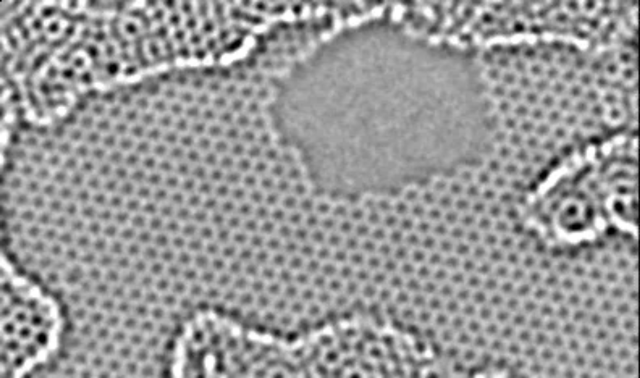
Hydroelectricity is one of the oldest techniques for generating electrical power, with over 150 countries using it as a source for renewable energy. Hydroelectric generators only work efficiently at large scales, though—scales large enough to interrupt river flow and possibly harm local ecosystems. And getting this sort of generation down to where it can power small devices isn't realistic.
In recent years, scientists have investigated generating electrical power using nano-structures. In particular, they have looked at generating electricity when ionic fluids—a liquid with charged ions in it—are pushed through a system with a pressure gradient. However, the ability to harvest the generated electricity has been limited because it requires a pressure gradient to drive ionic fluid through a small tube. But scientists have now found that dragging small droplets of salt water on strips of graphene generates electricity without the need for pressure gradients.
In their study, published in Nature Nanotechnology, researchers from China grew a layer of graphene and placed a droplet of salt water on it. They then dragged the droplet across the graphene layer at different velocities and found that the process generated a small voltage difference.
In addition to being the first to demonstrate this effect, the scientists found a linear relationship between the velocity and the generated electricity. The faster they dragged the droplet across the graphene strip, the higher the voltage they generated. The scientists also found that the voltage increased when multiple droplets of the same size were used at once.
What’s the mechanism behind this? The scientists looked at the charge distribution on the sides of the droplet when it was sitting still on graphene, as well as when it was moving. When the droplet was static, the charge redistributed symmetrically on both sides, leaving a net potential difference of zero between them.
However, when the droplet was dragged across the graphene strip, this distribution became unbalanced. The scientists found that electrons are desorbed from the graphene at one end of the droplet and are adsorbed into the graphene at another end, which results in a large potential on one side of the droplet and generates a measurable voltage across its length.
The scientists then scaled this technology up to demonstrate that you can harvest electricity from it. They used a droplet made of copper chloride and placed it on a graphene surface. The surface was tilted to one side and the droplet was allowed to flow from one end to the other under gravity, resulting in the generation of a measurable voltage—approximately 30mV.
Although orders of magnitude lower than today’s hydroelectric generators, these nano-sized generators can work with small devices, something that hydroelectric systems can't do. And they can easily be scaled up, providing the potential to create large-scale generators.
Nature Nanotechnology, 2014. DOI: 10.1038/NNANO.2014.56 (About DOIs).